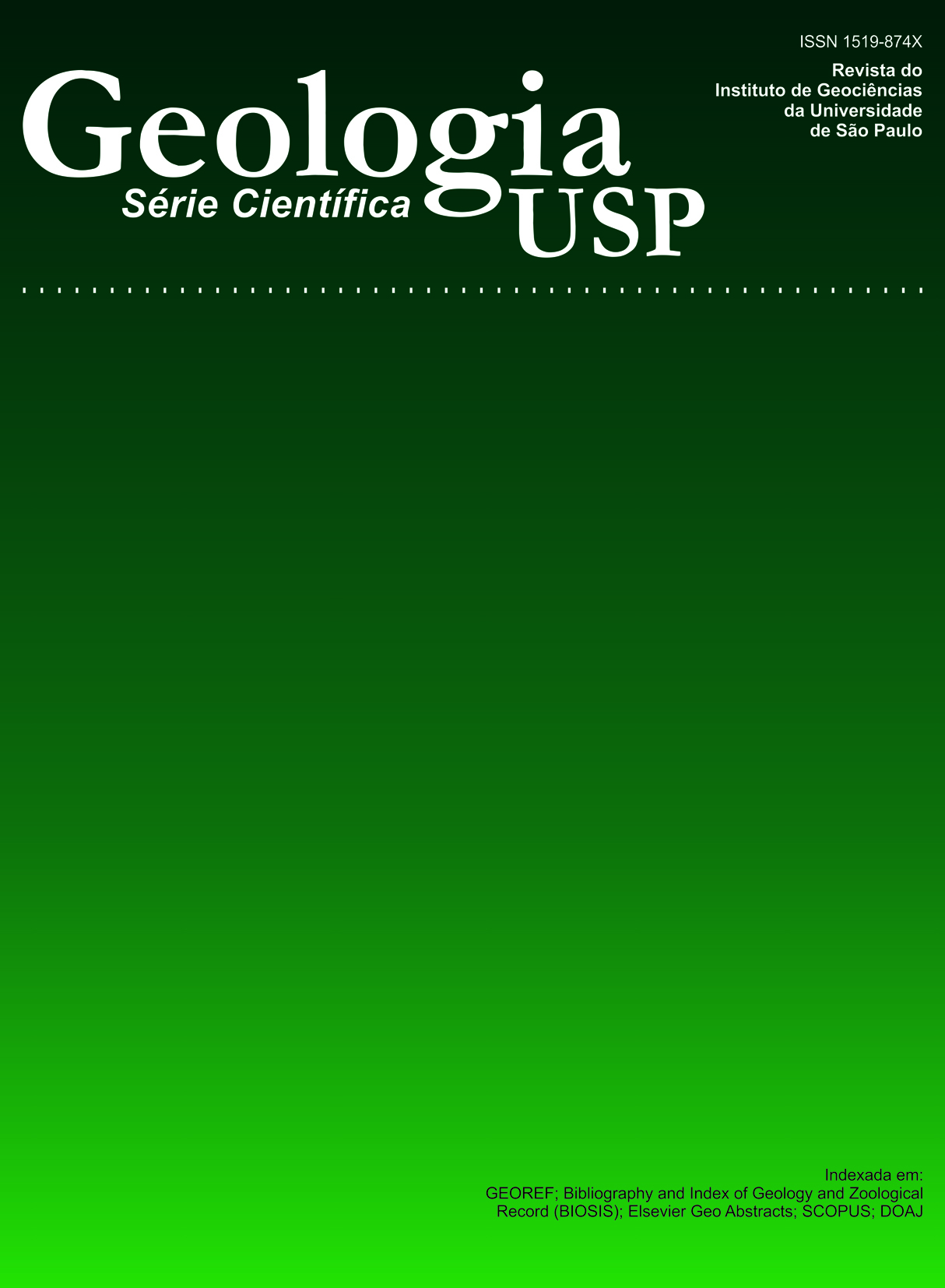Nd and Sr Isotopic, Geochemical and Petrographic Characteristics of the Morro de São João Alkaline Intrusion: Geodynamic Implications and the Composition of the Sub-lithosperical Mantle
DOI:
https://doi.org/10.5327/Z1519-874X2009000100006Keywords:
Morro de São João, Alkaline rocks, Isotopic chemistryAbstract
The Morro de São João Alkaline Complex (MSJ) is located in the NE part of Rio de Janeiro State and shows pronounced topography, with the following lithology: coarse-grained felsic syenites (K-feldspar, nepheline, hornblende, titanite and pseudoleucite), and mafic syenites (with K-feldspar, hornblende and piroxene). Petrography and lithogeochemistry data suggest a bimodal suite. Felsic and mafic magma mixing and mingling textures are locally observed indicating the presence of coeval magmas. Nd and Sr isotope compositions correspond to EMI (Enriched Mantle I) mantle reservoir signatures, suggesting an asthenospheric enriched mantle source with low 87Sr/86Sr values (from 0.7049 to 0.7061) and low 143Nd/144Nd (from 0.512361 to 0.512428). The εNd values range from -4.03 to -5.54, indicating an anomalous enriched mantle reservoir, confirmed by the high T DM values between 730 - 830 Ma, very different from the 72 - 56 Ma K-Ar cooling ages. The comparison of Sr and Nd signatures with related hotspot traces (Trindade, St. Helena and Tristan da Cunha) indicates that they are similar to those of Tristan da Cunha, but somewhat different from those of Trindade and St. Helena.Downloads
Download data is not yet available.
Downloads
Published
2009-01-01
Issue
Section
Articles
License
Authors who publish in this journal shall comply with the following terms:
- Authors keep their copyright and grant to Geologia USP: Série Científica the right of first publication, with the paper under the Creative Commons BY-NC-SA license (summary of the license: https://creativecommons.org/licenses/by-nc-sa/4.0 | full text of the license: https://creativecommons.org/licenses/by-nc-sa/4.0/legalcode) that allows the non-commercial sharing of the paper and granting the proper copyrights of the first publication in this journal.
- Authors are authorized to take additional contracts separately, for non-exclusive distribution of the version of the paper published in this journal (publish in institutional repository or as a book chapter), granting the proper copyrights of first publication in this journal.
- Authors are allowed and encouraged to publish and distribute their paper online (in institutional repositories or their personal page) at any point before or during the editorial process, since this can generate productive changes as well as increase the impact and citation of the published paper (See The effect of Open Access and downloads on citation impact).
How to Cite
Mota, C. E. M., Geraldes, M. C., Almeida, J. C. H. de, Vargas, T., Souza, D. M. de, Loureiro, R. de O., & Silva, A. P. da. (2009). Nd and Sr Isotopic, Geochemical and Petrographic Characteristics of the Morro de São João Alkaline Intrusion: Geodynamic Implications and the Composition of the Sub-lithosperical Mantle . Geologia USP. Série Científica, 9(1), 85-100. https://doi.org/10.5327/Z1519-874X2009000100006





